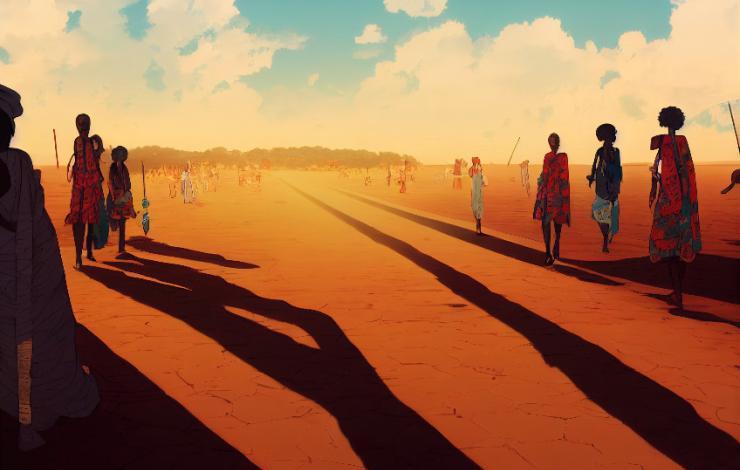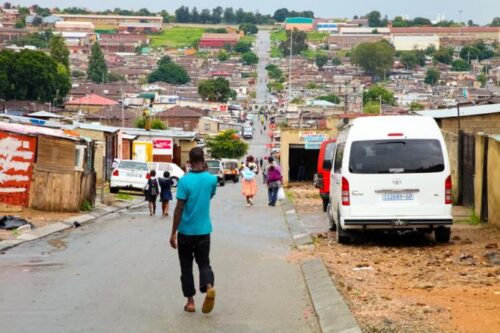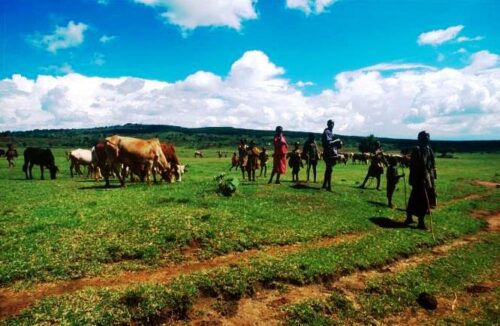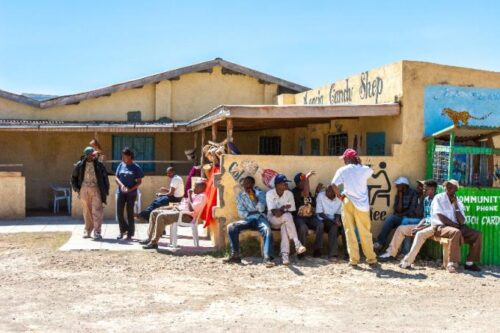Cities and New Models of Migration.

The economic or educational prospects offered by African cities are fundamental to the urban growth that the continent is experiencing in general, compared to countries such as Niger or Chad which see their rural populations growing.
Migrations from Africa have often been analysed by studying movements to other continents, especially Europe. However, the way intra-African migration works was not considered. Faced with this Africa-Europe travel idea, African populations move within their countries of origin or travel to neighbouring states in search of better basic conditions, employment or even education.
According to the African Migration Report 2020, a report published by the African Union and the International Organization for Migration (IOM), it is estimated that between 53% and 79% of migrations occur within the continent itself, while 26 % occurs outside of it.

It is estimated that between 53% and 79% of migrations occur within the African continent (Photo: IOM/Alessandro Lira)
Much of this migration occurs from the countryside to the city, although the continent has traditionally been one of the regions with the lowest urbanization rates in the world. While territories such as North America and Europe experienced an unprecedented rural exodus during the 20th century, as did Latin America and Asia in the last decades of the century, the African continent maintained a very high percentage of rural population. However, this does not mean that the African population has not moved from the village to the city. During colonization, European projects transformed several cities into colonial capitals, partly attracting rural populations by concentrating job opportunities.
North America currently tops the urban population chart (82%), followed by Latin America and the Caribbean (81%), Europe (74%), Oceania (68%), Asia (50%) and Africa (43%), according to UN-Habitat. Although the African continent is in last place, in recent decades the urbanization process has accelerated, and forecasts do not seem to indicate any change in the trend. It is estimated that in 2050, Africa will concentrate at least 21% of the world’s urban population, although these data must be analysed from a broader perspective.

On the outskirt of Johannesburg. 123rf.com
In recent years, Africa has followed a global trend characterized by increasing urbanization for two reasons: the natural growth of the urban population and the rural exodus. Both causes have generated an exponential increase in the inhabited area of the main cities, although this expansion is usually informal, without basic infrastructure and with environmental damage. To get an idea of this, it is estimated that in 2050 Africa will reach between 60% and 70% of the urbanization rate, that is, it will reach the current standard of Europe. It is evident that this rapid change will intensify the already existing traffic problems, the lack of essential services, pollution, uncontrolled urban sprawl, the conversion of agricultural land into urban space, and social change.
Although it is a fact that cities increase their population due to the arrival of migrants from secondary towns and cities, it is no less true that in some countries the rural population continues to increase, mainly due to local population growth.

Ethiopia. Two of the countries with the largest population in Africa will also increase their populations in the countryside: Nigeria and Ethiopia, with 50 and 40 million rural inhabitants, respectively.
According to UN-Habitat, countries like Niger are expected to triple their rural populations by 2050, and other states like Burundi, Chad, Malawi, Uganda, and Zambia are expected to double theirs within the same year. Furthermore, two of the countries with the largest population in Africa will also increase their populations in the countryside: Nigeria and Ethiopia, with 50 and 40 million rural inhabitants, respectively. Therefore, although there is an exponential growth in the urban population and that of the main cities of the continent, there are also other dynamics that often go unnoticed.
In the case of national migration, attention has been focused on a flow of impoverished people who go from the countryside to the city in search of a better life and who find themselves in a situation of exclusion due to a lack of infrastructure capable of welcoming them. But there is so much more. The migrant profile has changed in recent decades and there are not always movements from rural to urban areas.
Unidirectional movement?
The migratory logic experienced in other regions of the planet, characterized by an intense rural exodus, is overshadowing other dynamics which, albeit minority ones, continue to exist in continents such as Africa. Hence, in addition to rural-urban migration, there are also other migratory processes such as rural-countryside, city-city, and city-countryside. Likewise, migrations are generally not static, nor do they have a one-way direction.
On the continent, there are circular movements, in which migrants temporarily move to another point and then return.
Within temporary migration, mobility occurs for specific reasons – such as seasonal work – or for health needs and, moreover, return mobility is linked to the end of the working life of citizens who choose to return to their places of origin. Therefore, migratory movements in Africa can have a multidirectional and staggered character that responds to interests that go beyond the demand for work: educational, socio-cultural motivations, or economic opportunities.

Kenya. Men are waiting for work. ©grispb/123rf.com
Therefore, the reality goes far beyond the rural-urban movements which, although in the majority of cases, contemplate some challenges. Climate change and the depletion of natural resources question the model of extensive urban growth and the lack of sustainability. To this, we must add that the demographic increase in several African countries, especially in the cities, is fuelling the need for employment. Poor industrialization and the lack of an established service sector prevent the creation of stable jobs. The informal sector, while offering job opportunities, generates precarious jobs with low returns that increase the situation of poverty.
Although urban exodus also exists in some cases, it is far from establishing itself as a stable trend in Africa. Some of the reasons why some sectors decide to leave the city are due to retirement, job opportunities related to civil service positions in civil service, education, or health care. Or because the ‘myth of the city’ ends up breaking down.
A new generation
Migratory movements have changed in recent years, with new profiles, methods, and destinations. The younger generations of Africa and their goals have a lot to do with this. The African region has the lowest average age which in most African countries is around 20 years. This translates, in some cases, into a very high percentage of the population is young. For example, in countries like Ethiopia, 51% of the population is under the age of 20; in the Democratic Republic of Congo 56% of the inhabitants are in that age group, and at the head of the list is Niger, with 60%.In this context, it is easy to understand that the bulk of migratory movements occur among young people and not always for reasons of extreme dependence. The new needs of young people revolve around a higher education level, moving to major urban centres to obtain higher education in prestigious universities in Addis Ababa, Kampala, or South Africa.

South African students. The new needs of young people: to obtain higher education in prestigious universities in Addis Ababa, Kampala, or South Africa. 123rf.com
The search for qualified employment is also one of the reasons that lead young people to leave their places of origin and settle in urban centres where the possibility of working as doctors, public employees or in key companies is more favourable. Furthermore, we must not forget the interest of a part of this population in accessing the ways of life of a growing middle class and some presumably cosmopolitan lifestyles that are concentrated in the big capitals.
These migratory movements from the countryside to the city also worry about the vacuum they can create in rural areas. The former director of the United Nations Food and Agriculture Organization (FAO), José Graziano da Silva, has spoken out in favour of the revitalization of the rural areas of the African continent to avoid the progressive loss of young inhabitants. His formula was to promote small agro-industries and cooperatives that generate employment, accompanied by other measures such as access to the Internet, a better infrastructure network and the provision of public services, as well as promoting rural tourism.
However, at the moment there is no project that manages to keep the young population in rural areas or to attract new inhabitants. The danger of a progressive emptying of the countryside is increasingly present in national agendas. Despite this, it remains to be seen whether the forecasts in Africa and trends among the younger generations consolidate. (Illustration: 123rf.com.)
Pablo Arconada Ledesma



